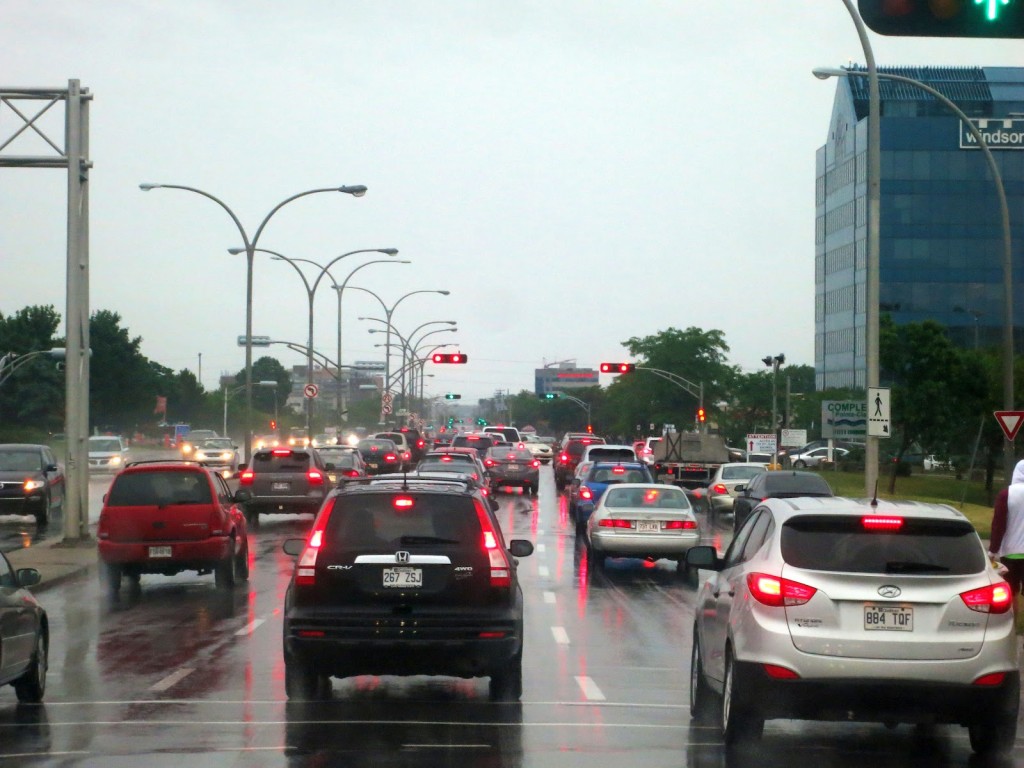Don’t expect new commuter rail lines anytime soon
By Robert Frank
The west end of Montreal has been stuck in a transportation time warp since 1976. The further you set foot west of downtown, the more you rewind the clock.
It’s still Land of the Minivan in the western suburbs. That’s not West Islanders’ fault. Whether through benign or malign neglect, the province has often ignored or delayed grappling with most West Island transportation infrastructure needs for nearly four decades.
Public transit hasn’t progressed much since the suburbs won their fight for Montreal bus service. Packed commuter trains that still share the busy transcontinental main line with freight trains got some newer, second-hand rolling stock, but don’t hold your breath for the long-vaunted commuter-only Train de l’ouest.
With much fanfare, Quebec Transport Minister Robert Poëti this month simply commited $80 million to buy more used railcars, to add three more trains each way daily to existing lines that take commuters downtown and back. Delivery might take two years. The announcement differed little from three years ago, when Clifford Lincoln led a parade of West Island mayors downtown for a similar declaration by then-Transport Minister Pierre Moreau.
During the provincial election campaign, Premier Philippe Couillard promised to put the Train de l’ouest line “back on the table.”
However, during this month’s city council meeting, Beaconsfield Mayor Georges Bourelle cautioned residents not to expect to see Train de l’ouest up and running during the next four years of the new provincial government’s mandate.
Meantime, the West Island’s population has grown and its three main north-south road arteries—Sources, St. John and St. Charles—face daily gridlock at rush hour. There’s no relief in sight.
Commuting is so delay-prone that telecom giant Bell recently told its persistently late employees that they will simply have to leave home earlier in the morning in order to get to work on time, or face disciplinary measures.
Transit times might soon spike, with pending closures to part of the Turcot exchange for repair work.
Rush hour means that a commute downtown from Île Bizard can take up to two hours. Many residents have already thrown in the towel and have moved closer to the city core. Among them are former Premier Pauline Marois and Transport Minister Poëti.
Yet an easy, effective solution has for decades languished on the drawing board: a fourth artery, the Jacques Bizard corridor, would run from Île Bizard over Highway 40 to the Lakeshore Hospital. Ironically, it would cost much less to remove the only roadblock—to expropriate a few blocks of housing in Pierrefonds—than the eye-watering sums that Quebec City is investing in other transport infrastructure projects.
For example, estimates of the price to complete Transport Quebec’s infamous bridge to nowhere in Dorval on Highway 20 reportedly has already topped a half-billion dollars.
(function(i,s,o,g,r,a,m){i[‘GoogleAnalyticsObject’]=r;i[r]=i[r]||function(){
(i[r].q=i[r].q||[]).push(arguments)},i[r].l=1*new Date();a=s.createElement(o),
m=s.getElementsByTagName(o)[0];a.async=1;a.src=g;m.parentNode.insertBefore(a,m)
})(window,document,’script’,’//www.google-analytics.com/analytics.js’,’ga’);
ga(‘create’, ‘UA-45892555-1’, ‘auto’);
ga(‘send’, ‘pageview’);
